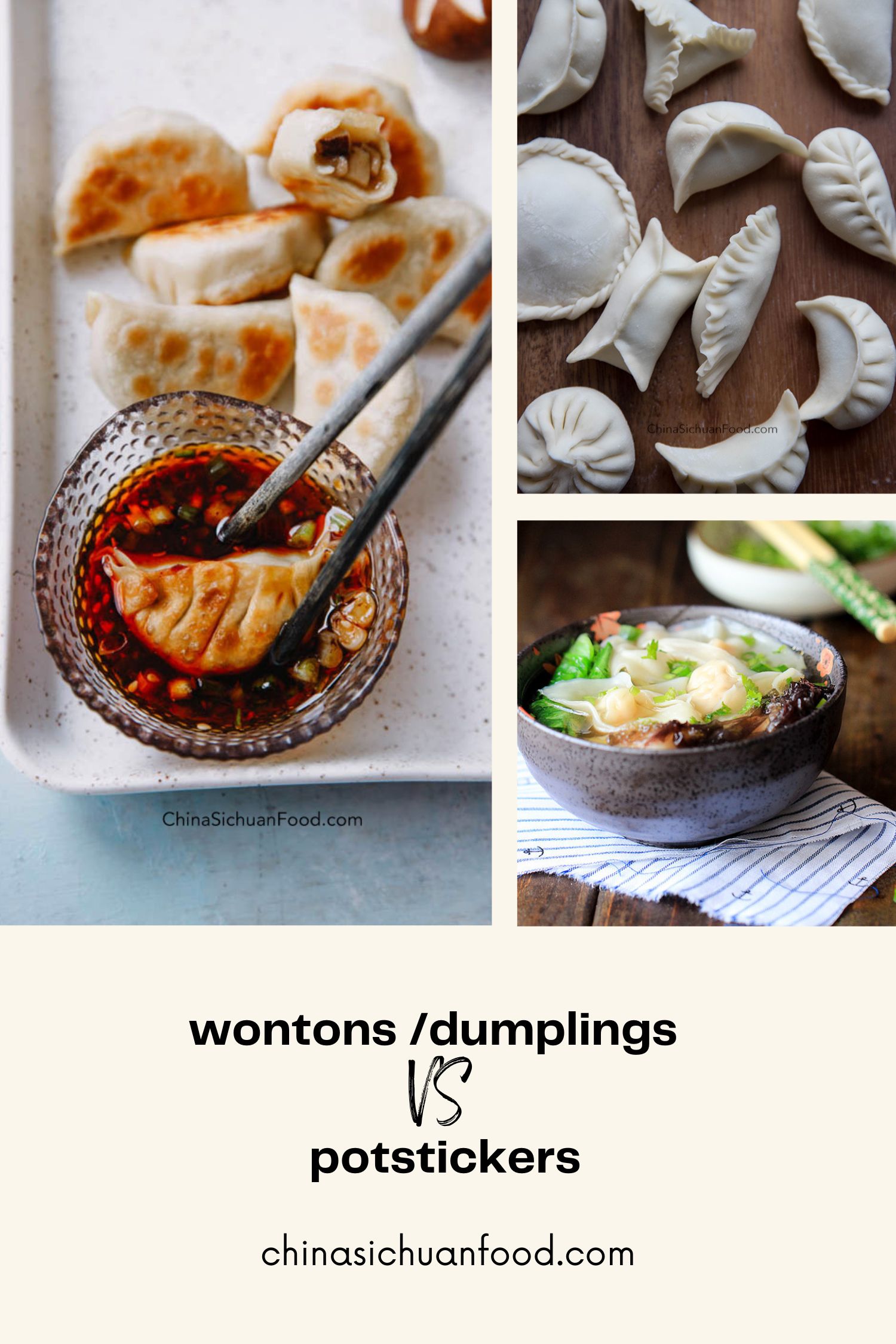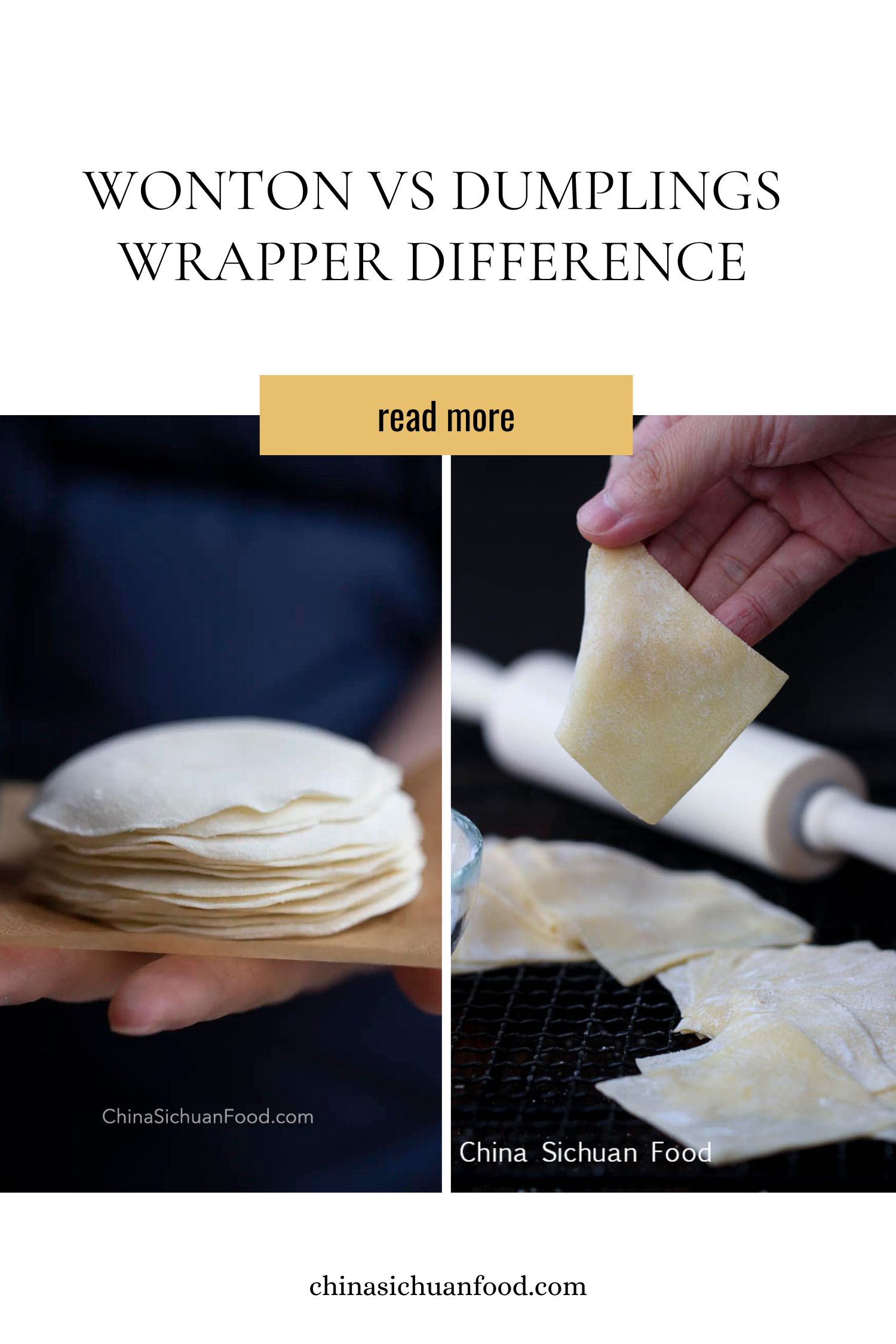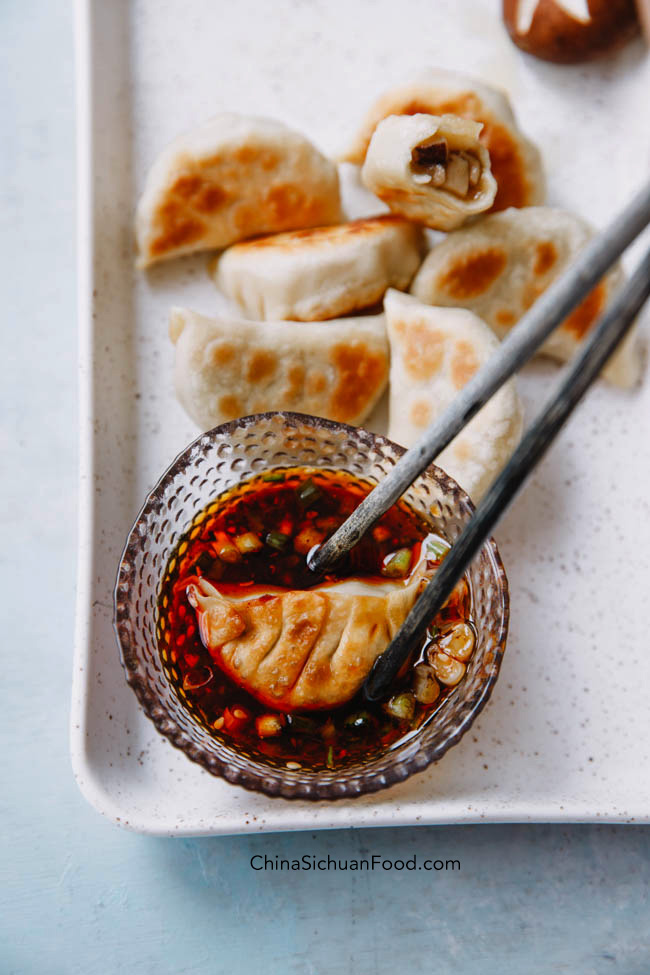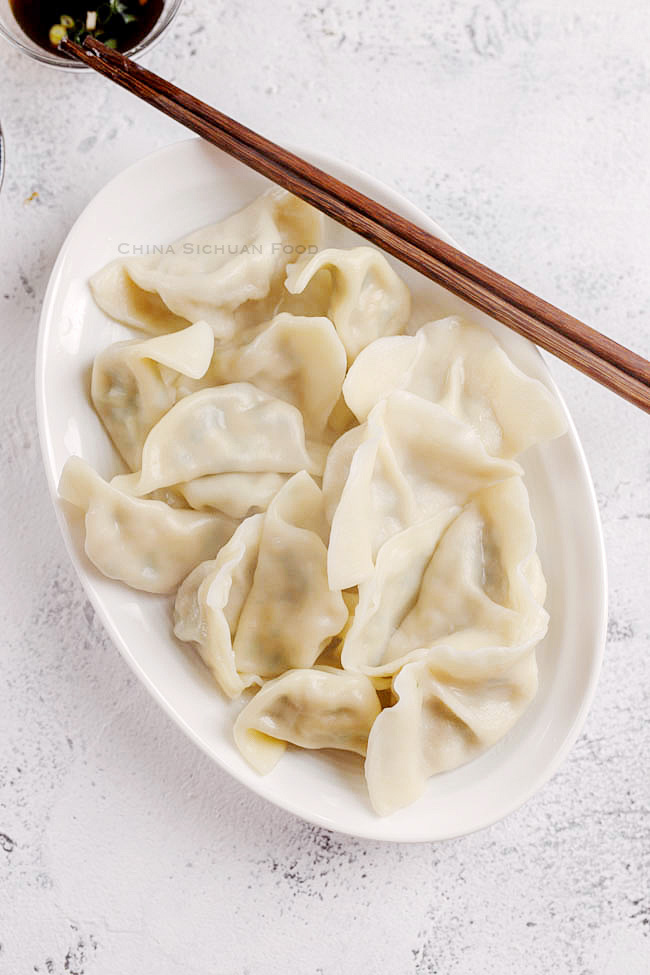Wontons, dumplings, and potstickers are the most popular Chinese staple food or street food. All three are pocket food with meat fillings. But there are distinct differences in terms of their dough, filling, cooking methods, serving styles, and origins. In this guide, we will check the main difference between wontons vs dumplings vs potstickers. Firstly let me clear that a potsticker is actually a type of dumpling. So we will compare the two first and list some extra features of potstickers at the end.

Following is a quick table for you to check the difference and we have more details in the following part.
| Type | Wontons | Dumplings | Potstickers |
|---|---|---|---|
| Origins | Cantonese cuisine, Southern China | Northern Chinese cuisine, Central Asia | Northern China street food |
| Wrapper | Thin, delicate, made of flour + water+egg+salt | Thick, chewy, made of flour + water+ salt | Same as dumplings |
| Shape | Square or round with straight sides | Lined or Round with fluted or pleated edges | Lined, sometimes opened |
| Filling | Meat+seasonings only | Meat+ seasonings+ vegetables | Same as dumplings |
| Cooking Method | Boiled, fried | Steamed, pan-fried, boiled | Pan-fried |
| Serving Style | Serving Style In soups, with noodles, | On plates, in steamers, with dipping sauce | on plates with dipping sauces |
| Nutrition | Higher calories, higher carbs, protein, fiber | Higher calorie, higher carbs, protein, fiber | Same as dumplings, plus more fat from frying |
wontons vs dumplings vs potstickers: wrapper dough difference
Ingredient and color difference: both wonton and dumpling wrappers are made from wheat-based dough. However, in most cases, wonton dough uses egg white or eggs. The egg allows them to hold their shape better during cooking and also gives a slightly yellow color.
Shape and thickness: Wonton wrappers are always super thin and soft in the form of a square. While dumpling wrappers are thicker and chewier than wonton wrappers in the form of round shapes.

wontons vs dumplings vs potstickers: Filling difference
Wontons, dumplings, and potstickers are all packaged with fillings. But there is a big difference among the filling.
Wonton fillings usually contain only meat and seasonings.
While filling for dumplings and potstickers usually contains vegetables like chives, mushrooms, cabbage, or wood ear mushroom.
This is because we only wrap a very small amount of filling (around 1 tsp) in wonton while we will wrap around 1 tablespoon of fillings in dumplings and potstickers.
Cooking methods difference
The most popular and common way of cooking wonton is to boil it and then serve it with a soup base. Deep-fried or pan-fried wontons are less popular then wonton soup.
While dumplings can be boiled (水饺), pan-fried (potstickers), and steamed (蒸饺). All of the three methods are equally popular.
Serving difference
Wontons are usually served with a soup base, either hot and sour, or sweet soup base.
Dumplings and potstickers are served with dipping sauces.
Dumplings vs potstickers
Dumplings and potstickers share the same filling and wrapper. But a dumpling is a much larger scoop. We call the pan-fried dumplings a potsticker.
So potstickers are pan-fried dumplings but dumplings include water-boiled dumplings, steamed dumplings, and potstickers.
Origins of Wontons
The wonton likely originated in Northern China but became closely associated with Cantonese cuisine in Southern China. The earliest record of wontons dates back to the Tang Dynasty (618-907 AD), describing wontons as small soup dumplings. As Cantonese cuisine developed through the Song Dynasty onward, the thin wonton wrapper became distinguished from its thicker dumpling cousins, as did signature cooking methods like boiling and frying.
By the 1900s, wontons had become popular across China and in Chinese communities abroad. The quintessential American Chinese restaurant dish, wonton soup, also emerged during this period. Wontons came to represent Cantonese cuisine and culture. While pork and shrimp wonton and wonton noodles soup are the most famous dish.
In the Sichuan area, wontons are a spicy soup base that makes them different and outstanding from other types of wonton dishes. We call it red oil wonton.
Origins of Dumplings
In contrast to wontons’ Southern Chinese identity, dumplings are strongly linked to Northern Chinese cuisine as well as the nomadic cultures of Central Asia.
Dumplings were historically ubiquitous across China’s Northern provinces. Each region developed its own signature shapes, filling ingredients, and folding techniques. Crescent-shaped cumin lamb dumplings originated from Uyghur communities in Xinjiang while minced pork and napa cabbage dumplings came from Shandong.
Dumplings are also extremely popular in other Asian countries.
The Invention of Potstickers
Potstickers are essentially a variety of pan-fried dumplings that likely originated among street food vendors in Northern China.
Unlike water-boiled or steamed dumplings, potstickers are pan-fried until crispy. Then water is added to create steam vapor to cook the top part. During the process, the crispy bottom never leaves the pan so it is potsticker.


Personally, I love all three of them. I love the crispy bottom of potstickers and the tiny dedicated wonton in soups and dumplings in various ways. Hopefully, this guide makes the difference quite obvious to you. And following are some of our best recipes for wontons, dumplings, and potstickers.
- wonton soup
- mushroom potstickers
- Pork and chive potstickers
- how to make Chinese dumplings
- Red oil wonton
- Cold sesame wonton
- Wonton wrappers
- Dumpling wrappers
- Deep-fried wontons
- Chinese shrimp wonton
FAQs
No, wonton and dumpling wrappers are not interchangeable. Dumpling wrappers are thicker to match well with the fillings and cooking methods.
Wontons: Finely minced pork, shrimp, and chicken with savory seasonings.
Dumplings: Popular dumpling fillings include pork and chive, cabbage dumplings, san xian filling, or vegan dumpling fillings using mushrooms and vegetables
Potstickers: Potstickers use any filling that you would find in a standard dumpling, like pork, chicken, cabbage, and scallions.
If you use store-bought wrappers, then all three types are easy to make at home. However, wonton wrappers are much more difficult to make than dumpling wrappers because it is much thinner and needs more practice to finish.
Conclusion
Now we know wontons and dumplings come from different regions. Wontons come from Cantonese cuisine while dumplings start in the population from the Northern part of China. Potsticker shares the wrapper and filling with dumplings but can be cooked only via pan-frying.
